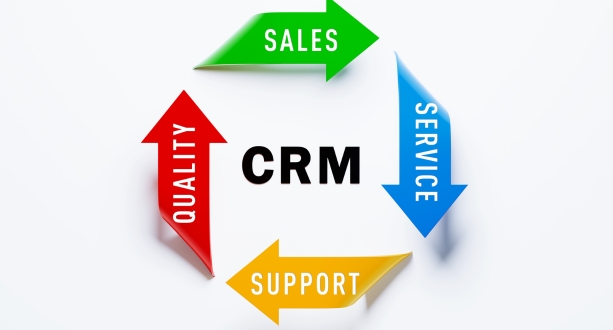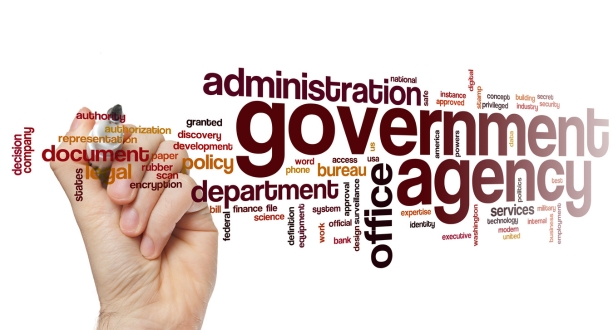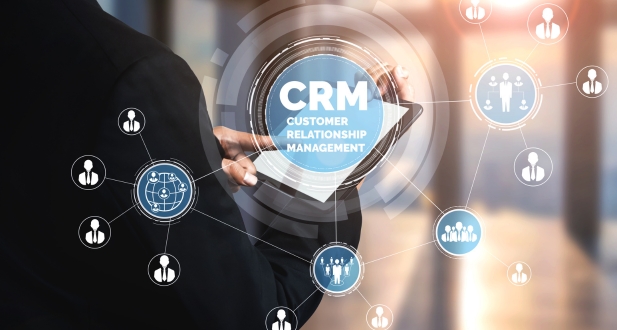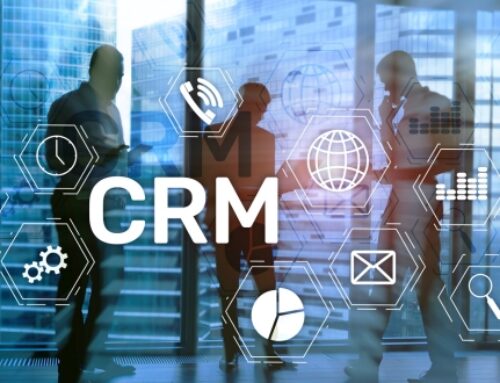Introduction: Streamlining Government Services with Salesforce CRM
Harnessing the Power of Technology for a More Efficient and Responsive Public Service
Today’s government sector faces an evolving landscape of increasing citizen expectations, complex regulations, and limited resources. Delivering efficient and responsive public services requires innovative solutions that streamline processes, enhance citizen engagement, and empower data-driven decision making. This is where Salesforce CRM emerges as a game-changer, transforming the way government agencies interact with citizens and manage operations.
The Evolving Landscape: Challenges and Opportunities
The landscape of public service is constantly shifting, demanding innovative approaches to navigate:
- Rising citizen expectations: Citizens demand personalized experiences, real-time communication, and seamless access to services. Traditional, siloed systems struggle to keep pace.
- Increased data complexity: Managing vast amounts of citizen data across disparate systems creates challenges for data security, transparency, and informed decision-making.
- Evolving regulations: Navigating a complex web of regulations and compliance requirements becomes a constant hurdle.
- Limited resources: Budget constraints and workforce challenges necessitate efficiencies and improved resource allocation.
Why Salesforce CRM? A Powerful Platform for Enhanced Citizen Engagement and Operational Efficiency

- Centralized data platform: Break down data silos and create a single source of truth for all citizen interactions, enhancing access and analysis.
- Personalized citizen engagement: Build stronger relationships with citizens through customized communication channels, proactive support, and targeted services.
- Streamlined workflows and automation: Automate routine tasks, eliminate redundancies, and free up employees to focus on high-value citizen interactions.
- Data-driven insights and decision making: Gain actionable insights from citizen data to optimize programs, allocate resources effectively, and improve service delivery.
- Enhanced transparency and accountability: Foster trust and build public confidence by sharing data, tracking performance metrics, and demonstrating responsible governance.
Unleashing the Benefits: Improved Citizen Experiences, Streamlined Processes, and Data-Driven Decision Making
- Implementing Salesforce CRM unlocks a wealth of benefits for both citizens and government agencies:
- Citizens: Enjoy faster service delivery, personalized experiences, and improved communication with government agencies.
- Agencies: Achieve operational excellence, optimize resource allocation, and make data-driven decisions to improve service effectiveness.
This is just the beginning of your journey with Salesforce CRM in government services. In the upcoming sections, we will delve deeper into the platform’s specific functionalities, benefits, and implementation strategies to equip you with the knowledge and tools needed to transform your agency and deliver a more efficient and responsive public service experience.
Key Salesforce CRM Features for Government Agencies

Citizen Engagement and Relationship Management: Building Trust, One Interaction at a Time
- Say goodbye to faceless forms and impersonal phone calls: Salesforce CRM equips you with a 360° view of each citizen, including interactions, preferences, and communication channels.
- Personalize every touchpoint : Deliver targeted information, proactive support, and relevant services based on individual needs and preferences. Imagine greeting citizens by name, referencing their past interactions, and offering solutions tailored to their unique circumstances.
- Build trust through transparency : Share relevant data, track service performance metrics, and keep citizens informed every step of the way. This fosters a sense of collaboration and accountability, strengthening the bond between government and citizen.
Public Service Management: Streamlining Workflows, Boosting Efficiency
- Free your team from the shackles of paperwork. Automate routine tasks like data entry, document generation, and case management, freeing up valuable time for high-value interactions with citizens.
- Seamless collaboration across departments. Break down departmental silos and foster real-time collaboration with shared data and centralized workflows. Imagine social workers, healthcare providers, and financial assistance officers working together in one platform, ensuring seamless service delivery for citizens.
- Optimize resource allocation. Analyze service performance data to identify areas for improvement and make data-driven decisions about resource allocation. This ensures your agency is operating at peak efficiency, delivering the most impact with limited resources.
Data Analytics and Reporting: Transforming Intuition into Informed Choices
- Unveil the hidden patterns in your data. Salesforce CRM isn’t just a data repository; it’s a crystal ball for predicting future trends and making informed decisions. Analyze citizen interactions, track program performance, and identify areas for improvement.
- Move beyond gut feelings and embrace data-driven strategies. Say goodbye to guesswork and intuition-based decisions. With actionable insights at your fingertips, you can confidently allocate resources, optimize programs, and develop targeted services that resonate with your citizens.
- Predict citizen needs and stay ahead of the curve. Analyze citizen interactions and service usage data to anticipate future needs and proactively offer solutions. Imagine preventing delays in social service programs or offering preventative healthcare services before citizens even experience symptoms.
Grant Management: Simplifying the Process, Ensuring Compliance
- Grant application processes can be a tangled web of paperwork and deadlines. Salesforce CRM streamlines the process, making it easier for citizens and agencies alike.
- Track funding allocation and ensure compliance. Manage grant funds effectively, track spending against budgets, and demonstrate adherence to regulations with built-in tools and automation. This reduces the risk of errors and audits, building trust with grantors and citizens.
- Connect grantees with resources and support. Foster collaboration and knowledge sharing between grantees and government agencies, maximizing the impact of grant funding and ensuring successful program outcomes.
Regulatory Compliance: Mitigate Risks, Build Confidence
- Navigate the complex maze of government regulations with ease. Salesforce CRM provides built-in tools and automated workflows to ensure compliance with legal requirements and industry standards.
- Reduce the risk of errors and fines. Streamline processes, automate reporting, and track compliance measures to minimize the risk of human error and regulatory violations. This protects your agency and builds trust with citizens.
- Demonstrate responsible governance. Share compliance data and reports with stakeholders, fostering transparency and accountability within your agency and with the public.
Open Data and Transparency: Building Trust, One Byte at a Time
- Open data is the cornerstone of a transparent government. Share relevant data with citizens through secure portals and dashboards, empowering them to understand government operations and make informed decisions.
- Promote public engagement and collaboration. Encourage citizens to participate in policy discussions, provide feedback on services, and offer solutions to community challenges. This fosters a sense of ownership and accountability, leading to better government outcomes.
- Build trust and strengthen the social contract. By sharing data and being open to feedback, you demonstrate your commitment to transparency and accountability, ultimately strengthening the bond between government and citizens.
These are just a glimpse into the transformative power of Salesforce CRM for government agencies. In the next section, we’ll delve deeper and showcase how these functionalities translate into tangible results for specific government sectors, whether you’re a social services department, a healthcare provider, or a regulatory agency.
Unleashing the Potential: Beyond Efficiency – How Salesforce CRM Transforms Public Service
Salesforce CRM isn’t just about streamlining workflow and boosting efficiency; it’s about reinventing the way government agencies interact with citizens and shape the future of public service. Let’s explore how these key benefits translate into real-world impact:
Enhanced Citizen Experiences: From Frustration to Satisfaction
- Imagine a social services department where citizens receive proactive outreach for food assistance before their benefits expire, or where appointment wait times are minimized through personalized communication channels.
- Picture a healthcare agency offering personalized health insights based on medical history and preventative care reminders, reducing unnecessary hospital visits and empowering citizens to take charge of their well-being.
- Think of a regulatory agency that streamlines the permit application process, providing real-time updates and proactive support to businesses, fostering collaboration and boosting economic growth.
Streamlined Operations and Increased Productivity: Breaking Free from Paperwork Purgatory
- Government employees no longer drown in paperwork. Routine tasks like permit approvals, grant applications, and case management are automated and centralized, freeing up valuable time for high-value interactions with citizens, case analysis, and policy development.
- Data silos vanish, replaced by a unified citizen profile that empowers employees across departments to provide seamless, coordinated service. Imagine social workers, housing officers, and healthcare providers accessing the same information in real-time, ensuring citizens receive cohesive support.
- Productivity skyrockets, allowing agencies to do more with limited resources, delivering efficient and responsive service to a growing population.
Data-Driven Decision Making: From Gut Feelings to Informed Choices
- Imagine predicting a surge in food assistance requests due to an unexpected economic downturn. With Salesforce CRM’s analytics tools, agencies can analyze historical data and citizen interactions to anticipate needs and proactively allocate resources, preventing crises and ensuring timely service delivery.
- Identifying underutilized social programs? Data analysis reveals program effectiveness, allowing agencies to optimize resource allocation, focus on programs with the highest impact, and improve overall service effectiveness.
- No more chasing elusive trends. Citizens’ interactions, service usage data, and feedback become actionable insights, enabling agencies to make data-driven decisions on policy changes, program development, and resource allocation, leading to a more responsive and effective government.
Improved Transparency and Accountability: Building Trust One Byte at a Time
- Open data portals powered by Salesforce CRM empower citizens to access relevant government data, from budget allocations to permit approvals. This fosters transparency and accountability, strengthening the bond between government and citizens.
- Performance dashboards track service delivery metrics in real-time, allowing citizens to see how their tax dollars are being used and hold agencies accountable for results. Imagine citizens easily accessing statistics on permit processing times or social program outcomes, building trust and confidence in government operations.
- Proactive communication and feedback mechanisms encourage citizen engagement, allowing agencies to gather insights, address concerns, and constantly improve service delivery. This creates a collaborative and responsive government that truly serves the needs of its citizens.
Enhanced Collaboration and Communication: Breaking Down Silos, Building Bridges
- Interdepartmental communication silos crumble as shared data platforms and centralized workflows foster seamless collaboration across agencies. Imagine healthcare providers working directly with social workers to address the holistic needs of vulnerable citizens, or environmental regulators collaborating with economic development agencies to ensure sustainable growth.
- Real-time information sharing enables agencies to respond to crises and emergencies in a coordinated manner, minimizing delays and maximizing effectiveness. Picture a natural disaster response where multiple agencies share updated information on evacuation routes, resource allocation, and citizen needs, ensuring a swift and unified response.
- Cross-agency knowledge sharing becomes the norm, leading to improved policy development, service innovation, and better overall government outcomes.
Scalability and Adaptability: Future-Proofing Your Public Service
- Citizen needs evolve, and so should your government. Salesforce CRM’s flexible architecture scales effortlessly to accommodate an expanding population or new service offerings.
- Evolving regulations? No problem. The platform keeps pace with changing legal requirements, ensuring compliance and safeguarding citizen data.
- Embrace innovation. Integrate emerging technologies like AI and blockchain to automate tasks, enhance security, and deliver citizen-centric services in new and innovative ways.
Salesforce CRM isn’t just a software; it’s a catalyst for transformation. By harnessing its power, government agencies can shift from reactive to proactive service delivery, build trust and transparency with citizens, and ultimately, create a more effective and responsive public service for the future.
Building Your Government CRM Champion: A Roadmap for Successful Salesforce CRM Implementation
Embracing Salesforce CRM is like scaling Mount Everest – exhilarating, but with its own set of challenges. Fear not, intrepid government leader! This section equips you with the tools to navigate the implementation process and ensure your CRM journey reaches the summit of success.
Assessing Needs and Defining Success Metrics: Charting Your Course
Before embarking on your Salesforce CRM adventure, it’s crucial to define your destination:
- Identify your pain points: Pinpoint the specific challenges hindering your agency’s efficiency and effectiveness. Are siloed data, manual processes, or citizen dissatisfaction holding you back?
- Set clear goals: What do you hope to achieve with CRM? Increased citizen engagement, streamlined operations, or data-driven decision making? Define measurable goals to track your progress and demonstrate ROI.
- Align with agency objectives: Ensure your CRM implementation supports your agency’s overall strategic plan. Don’t get sidetracked by shiny features; choose functionalities that directly address your agency’s needs and priorities.
User Training and Adoption: Building Champions, Not Skeptics
- Change can be daunting, especially when it involves new technology. Nurturing user buy-in and ensuring seamless adoption is key to success:
- Comprehensive training: Provide user-friendly training tailored to different roles and levels of technical expertise. Hands-on workshops, interactive demos, and ongoing support are your Sherpas to conquer the learning curve.
- Communication and transparency: Keep users informed throughout the process, address concerns proactively, and celebrate milestones to maintain momentum and excitement.
- Incentivize the journey: Reward early adopters and recognize outstanding performance to create a culture of CRM champions within your agency.
Data Migration and Integration: Connecting the Dots
Moving your existing data to Salesforce CRM is a crucial step. Ensure a smooth and accurate transition:
- Plan and prioritize: Map your data sources, identify potential challenges, and prioritize data migration based on its impact on your agency’s operations.
- Choose the right tools and strategies: Utilize data migration tools, cleansing practices, and quality control measures to ensure accurate and complete data transfer.
- Integrate with existing systems: Bridge the gap between CRM and other essential platforms like financial systems or citizen portals for a unified data flow and seamless user experience.
Change Management and Ongoing Optimization: Embracing the Evolving Landscape
CRM isn’t a “set it and forget it” solution. Continuous optimization is key to maximizing its impact:
- Monitor progress and track metrics: Regularly assess your success metrics and identify areas for improvement. Use dashboards, reports, and user feedback to gain valuable insights.
- Adapt to change and embrace new features: Stay updated on the latest Salesforce releases, adopt new features that align with your evolving needs, and maintain your CRM as a dynamic tool for growth.
- Promote ongoing feedback and user engagement: Encourage users to provide feedback, suggest improvements, and actively participate in refining the system to meet their evolving needs.
Remember, successful implementation is a collaborative journey, not a solo sprint. By following this roadmap, building your team of champions, and embracing a culture of continuous improvement, you can transform Salesforce CRM into the engine that propels your agency to new heights of efficiency, transparency, and citizen-centric service.
Conquering the Mountain: Overcoming Common Challenges in Government CRM Implementation
Even the most meticulous climber can encounter unexpected boulders on their ascent. Implementing Salesforce CRM in a government agency is no different. While the rewards are vast, common challenges can act as pesky obstacles on the path to success. Let’s equip you with the tools to conquer these hurdles and ensure your CRM journey reaches the peak of service excellence.
Data Migration Hurdles: Accuracy is Key
Transferring legacy data to a new platform can be a data-migration Everest. Here’s how to navigate the treacherous slopes:
- Plan meticulously: Map your data sources, identify inconsistencies, and prioritize data based on its importance to core functions. Remember, haste makes data waste!
- Cleanse and validate: Employ data cleansing tools and manual verification to ensure accuracy and completeness. Garbage data in, garbage data out!
- Phased approach: Consider migrating data in phases, starting with critical information and gradually adding more complexity. This allows for course correction and minimizes disruption.
User Resistance and Change Management: Climbing the Wall of Skepticism
New technology can be met with raised eyebrows and furrowed brows. Here’s how to bridge the empathy gap and win over hearts and minds:
- Communication is king: Keep users informed throughout the process, address concerns proactively, and highlight the benefits of CRM in a clear and relatable way. Speak their language, not tech jargon!
- Training tailored to roles: Provide user-friendly training specific to different departments and levels of expertise. Hands-on workshops, bite-sized learning modules, and ongoing support are your rope and harness to conquer the learning curve.
- Incentivize the climb: Reward early adopters and celebrate milestones to create a culture of champions and spread the enthusiasm. Show them the view from the top!
Integration Woes: Bridging the Data Divide
Connecting Salesforce CRM with existing government systems can be a jigsaw puzzle with missing pieces. Here’s how to make the picture perfect:
- Map the connections: Identify dependencies between CRM and other systems and prioritize integrations based on their impact on user workflows and data accessibility.
- Choose the right tools: Utilize robust integration tools and APIs designed for government systems to ensure seamless data flow and avoid compatibility headaches.
- Test and refine: Thoroughly test integrations before deploying them to users and monitor their performance regularly. Remember, even the best bridges need maintenance!
Budget Constraints: Climbing on a Tightrope
Justifying the cost of new technology can be tricky. Here’s how to make a compelling case for Salesforce CRM:
- Quantify the benefits: Translate improved efficiency, data-driven decision making, and increased citizen satisfaction into tangible cost savings and revenue gains. Show them the gold at the end of the rainbow!
- Highlight ROI: Showcase case studies and success stories from other government agencies that have implemented CRM and achieved measurable results. Prove it’s not just a shiny new toy!
- Phased implementation: Consider a phased approach to implementation, starting with core functionalities and gradually expanding as budget allows. This demonstrates a responsible and cost-effective approach.
Lack of Strategic Planning: Avoiding the Wrong Mountain
Implementing CRM without a clear plan is like climbing the wrong mountain. Here’s how to chart the right course:
- Set clear goals and objectives: Align CRM implementation with your agency’s overall strategic plan. Don’t get sidetracked by shiny features; choose functionalities that directly address your specific needs and priorities.
- Stakeholder buy-in: Involve key stakeholders in the planning process to ensure alignment and commitment. A shared summit makes the climb smoother!
- Flexible and adaptable plan: Be prepared to adapt your plan as circumstances change and new insights emerge. Embrace agility, not rigidity, on your journey!
By tackling these challenges head-on with the right tools and strategies, you can transform them from roadblocks into stepping stones on your path to CRM success. Remember, conquering Everest takes perseverance, adaptability, and a team of dedicated climbers. So, gather your champions, equip them with the knowledge and support they need, and embark on your government CRM journey with confidence!
Gazing into the Crystal Ball: Emerging Trends Shaping the Future of Government CRM
The future of government CRM is not set in stone, it’s a dynamic landscape brimming with possibilities. As technology evolves, we can expect exciting trends to reshape the way agencies interact with citizens and deliver public service. Let’s peer into the crystal ball and envision the future:
Artificial Intelligence: The Power of Prediction and Personalization
AI will revolutionize citizen engagement, transforming government interactions from reactive to proactive. Imagine a CRM that:
- Anticipates needs: Analyzes citizen data and service usage to predict potential issues and proactively offer solutions. Think social services offering food assistance before benefits expire or healthcare providers sending preventative care reminders based on individual health profiles.
- Personalized service delivery: Tailors communication channels, information, and even service offerings to individual preferences and needs. Imagine receiving government updates through your preferred channel and in your preferred language, creating a truly citizen-centric experience.
- Automates routine tasks: Frees up human resources for high-value interactions by automating tasks like case management, permit approvals, and data entry. This allows government employees to focus on building stronger relationships with citizens and addressing complex issues.
Blockchain Technology: Building Trust, Brick by Brick
Blockchain technology will bring unprecedented levels of security and transparency to government data, fostering trust and citizen confidence. Imagine a CRM where:
- Data is tamper-proof and secure: Blockchain’s inherent security features protect sensitive citizen data from unauthorized access and manipulation, ensuring privacy and building trust.
- Transparency is the norm: Citizens can easily access and verify government data, from budget allocations to permit approvals, leading to greater accountability and informed decision-making.
- Compliance is streamlined: Automated workflows and tamper-proof data records make compliance with regulations easier and more efficient, saving time and resources.
The Rise of the Intelligent CRM: Towards a Hyper-Personalized Future
The future of government CRM is not just about technology; it’s about creating intelligent systems that empower better service delivery. Imagine a CRM that:
- Learns and adapts: Continuously analyzes data and user interactions to improve its recommendation accuracy, personalize experiences, and anticipate citizen needs.
- Provides real-time insights: Offers actionable data-driven insights to government officials, enabling them to make informed decisions that benefit citizens.
- Proactively identifies trends and issues: Analyzes data to detect potential problems like fraud, abuse, or service gaps, allowing agencies to take preventative measures and improve overall service effectiveness.
The future of government CRM is not just about efficiency; it’s about building trust, personalizing experiences, and making data-driven decisions that ultimately lead to better public service. As these trends converge, we can expect a future where government agencies are not just responsive but proactive, not just efficient but effective, and not just transparent but truly citizen-centric.
Conclusion
Salesforce CRM Government Solutions play a pivotal role in modernizing and optimizing government operations. By leveraging the power of Salesforce CRM, government agencies can enhance citizen services, improve internal processes, and foster a more transparent and efficient government ecosystem. The platform’s robust features, including citizen engagement tools, data analytics, and workflow automation, empower government organizations to deliver personalized and responsive services. Salesforce CRM facilitates seamless collaboration among different departments, leading to better coordination and resource allocation. Security and compliance are paramount in the public sector, and Salesforce CRM addresses these concerns with robust measures.
The platform adheres to stringent security protocols, ensuring the confidentiality and integrity of sensitive government data. Additionally, compliance with regulatory standards is a fundamental aspect of Salesforce CRM Government Solutions. The integration of artificial intelligence (AI) and advanced analytics further enhances decision-making within government agencies. Predictive analytics capabilities enable proactive problem-solving, allowing agencies to address issues before they escalate. The customizable nature of Salesforce CRM ensures that government entities can tailor the platform to their specific needs, adapting to evolving requirements and challenges. As government agencies strive to embrace digital transformation,
Salesforce CRM serves as a catalyst for innovation and efficiency. It empowers public servants to focus on delivering impactful outcomes for citizens, ultimately contributing to a more connected, responsive, and citizen-centric government. With ongoing support, updates, and a commitment to excellence, Salesforce CRM continues to be a trusted partner in shaping the future of effective and citizen-friendly government services.







